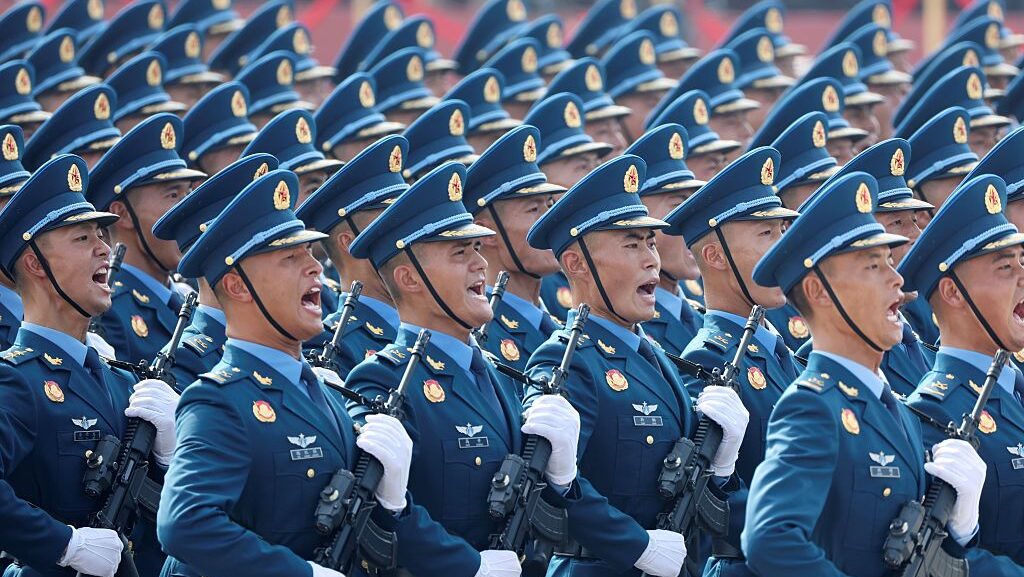
NAHA, Japan — Recent images of what appears to be China’s J-50 stealth fighter have revealed what experts told Breaking Defense are new details about the plane’s design, and hints towards its likely eventual mission.
The first clear photos of the aircraft, which has been variously referred to by a temporary designation of J-50, J-XD, or J-XDS in the absence of any official acknowledgement by China’s government, were first published online on social media in late September.
They showed the front and rear quarter views of the aircraft that has is being developed by the Shenyang Aircraft Corporation (SAC), showing all-moving wingtips which act as control surfaces and thrust vectoring exhaust nozzles.
It also features twin Diverterless Supersonic Intakes, heavy-duty twin-wheeled nose landing gear and a low-profile canopy for a single pilot.
RELATED: How China’s next-gen fighters could impact America’s plans for NGAD
Justin Bronk, senior research fellow for airpower and technology in the Military Sciences team at the Royal United Services Institute, told Breaking Defense that the design is clearly optimized for improved wideband stealth, even when compared to fifth generation fighters, through the removal of canted vertical stabilisers.
The use of 2D thrust vectoring engine exhaust nozzles, like those found on the US Air Force’s F-22 Raptor, would provide enhanced pitch control to partially compensate for the lack of the canted vertical tails.
“The design is very low drag, and with two even current WS-10C class engines would likely have significant supercruise capabilities at high altitudes, allowing enhanced range and missile reach,” noted Bronk.
Andreas Rupprecht, who has authored several books on Chinese air power, said that the design is likely the “low” component of a future next generation hi-lo mix for China’s air forces, noting that the aircraft appears to be slightly smaller than the Shenyang J-16 multirole fighter.
RELATED: What’s in a pin? Trump dons golden F-22 during Erdogan meeting
Such a “low” aircraft will likely replace some of the older aircraft in China’s inventory, such as the Xi’an fighter-bomber, early Chengdu J-10 multirole fighters and the last of the Shenyang J-11 fighters. The “high” component would be filled by a larger design that has been tentatively designated as the Chengdu J-36, another Chinese stealth design that has been sighted undergoing flight testing.
Bronk pointed out that the twin-wheeled nose landing gear could suggest that China sees the design as a potential carrierborne aircraft, although the tailless design could result in complications during carrier operations due to limitations in high angle of attack performance and controllability in the yaw axis.
“This will limit agility compared to traditional fighters, increase flight control system complexity and make adaption for carrier operations more challenging,” he warned.
He added that this smaller design will likely be intended for high-end air superiority missions first and foremost, albeit with a shorter range and smaller internal payload than the J-36.
Nevertheless, Rupprecht expects that the J-50 will still have significant internal volume for fuel and weapons, with earlier photos of the aircraft in flight showing it has two separate weapons bays on the bottom fuselage.
He also told Breaking Defense that much would depends on how successful and capable the unmanned assets China is known to be developing would be, as there is a possibility that some of the loyal-wingmen unmanned aircraft could also replace the aforementioned fighters in the to some degree.



